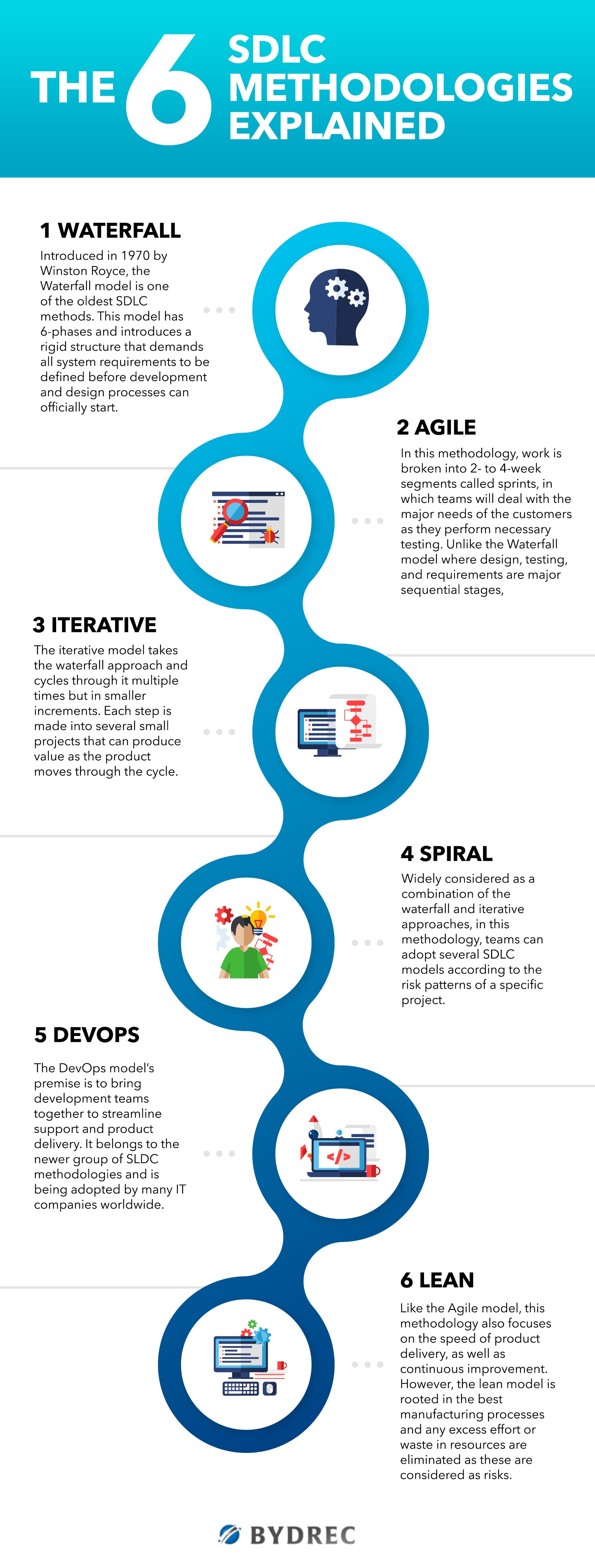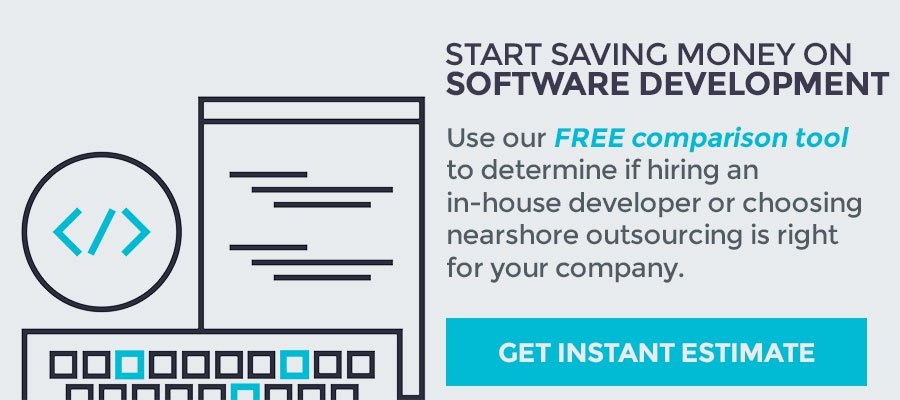

This Article was updated November 2019
What is the Definition of SDLC?
The software development life cycle (SDLC) refers to the steps in developing any kind of software, from beginning to end. An iterative and multi-step process, it provides a systematic approach for building and delivering software application. Teams depend on a system development life cycle to create a functional and effective software that meets the customer’s needs.
There are six general stages of software development: planning, analysis, designing, development and testing, implementation, and maintenance. Most of the time, multiple SDLC methodologies are combined to form a hybrid model. These software development methodologies can be adapted to fit into the development process of certain software.
Project managers and software engineers select SDLC methodologies based on different factors. The model you choose for a project can depend on a lot of things such as business requirements, budget, time available, the required level of expertise, and so on.
In order to make an informed decision, it’s important to have a clear understanding of all the SDLC methodologies and how they are different from each other. Knowing the methodologies helps you choose which one fits your project best.
Let’s take a closer look at each of the SDLC methodologies and how they work.

1. Waterfall
Waterfall is the most straightforward of all SDLC methodologies. It follows a linear sequential order when developing software. Unlike other methods, Waterfall is a strict approach. Developers work step-by-step beginning from requirement evaluation to product deployment. The team only moves forward when the previous one is finished.
Every stage in the Waterfall framework as its mini-plan—each phase needs to be completed first before it “waterfalls” into the next. Many teams prefer the Waterfall model because it’s easy to manage and plan. The biggest drawback, however, is that even the smallest detail can delay the entire project if it's left incomplete. This makes the entire process more time-consuming and rigid.
Given the above, this method can only be performed if the customers are aware of all requirements and require the developers to follow them strictly. Waterfall is best for smaller projects that have clearly-defined requirements.
Related Content: SDLC Methodologies: What is the Waterfall Model?
2. Lean
The Lean SDLC model is often likened to the Agile approach due to their similarities. Like the Agile framework, Lean prioritizes iterative improvements, quick end product delivery, and efficiency. This method was inspired by the Japanese manufacturing method of lean production, focusing on increasing productivity by reducing waste at each SDLC phase.
When it comes to software development, efficiency and productivity are very important. This is the reason why many software engineers and project managers turn towards lean practices in an effort to reduce cost and waste.
3. Agile
One of the most commonly-used SDLC methodologies, Agile breaks up the project into cycles and provides a finished product in a fast manner. In this method, there is a succession of releases. Feedback information from each release is incorporated into the following version. One drawback of this model, however, is that greater emphasis on customer interaction can direct the project in the wrong path.
Contrary to other models, Agile welcomes new requirements, even those that are provided late in the development cycle. This not only ensures higher customer satisfaction but also a valuable end product. Developers, users, and sponsors have a consistent pace throughout the process. Because of this, the Agile process offers a sustainable software development project that is both cost-effective and efficient.
Related Content: Key Differences Between the Lean, Agile, and Scrum Methodology
4. Spiral
Considered as the most flexible among all SDLC methodologies, the Spiral model is generally implemented for full-blown projects. This approach allows teams to come up with a highly-customized product at the end of the cycle.
There are four phases involved in the Spiral method: planning, risk analysis, engineering, and evaluation. Each Spiral model iteration starts with evaluating possible risks and identifying the best way to avoid them. All these phases are repeated over and over, up until project completion. This gives teams an opportunity to have many rounds of product refinement.
5. Iterative
The Iterative SDLC model was developed to be an alternative to the Waterfall method. This approach follows the same steps in the Waterfall model but in iterations or repetitive processes.
In the Iterative model, the process starts with planning and ends with deployment. Between those two are cyclical steps of design, planning, implementation, evaluation, and testing. Each stage or iteration of this model creates a better version of the software going through development. This rinse-repeat approach is continuously done until the final software is improved.
One of the most well-known examples of the Iterative approach is the Rational Unified Process (RUP) from the Rational Software division of IBM.
6. DevOps
DevOps is a contraction for “developers” and “operations.” The DevOps methodology was created from two trends: the shift in business to seeing the value of the collaboration between operations and development teams, and the application of Agile and Lean models.
In this methodology, the developers and operations teams work hand-in-hand to innovate and accelerate the delivery of valuable software products. This model focuses on process improvement, constant feedback, discipline, and automation of manual development processes. Although the updates made to the software being developed are short, they are implemented at a much higher frequency.
SDLC Methodologies: Finding the Best Model for Your Needs
Choosing one from the many SDLC methodologies can be tricky - but not impossible. You simply need to understand each approach and its unique advantages that could benefit certain requirements, environments, and projects.
For instance, you may have a straightforward project with set requirements that cannot be changed. In this case, Waterfall is the best option. But if you are working on a large-scale project with lots of components, an iterative or spiral model would work better because you can make changes along the way.
Conclusion
When it comes to SDLC methodologies, there is no one-size-fits-all model, or one that is better than the others. The methodology - or combination of methodologies - that you choose should cater to your specific needs as a business. That's why knowing each type of SDLC model is key. Once you are able to assess all requirements from the stakeholders, you can decide on a method that fits your needs best.



